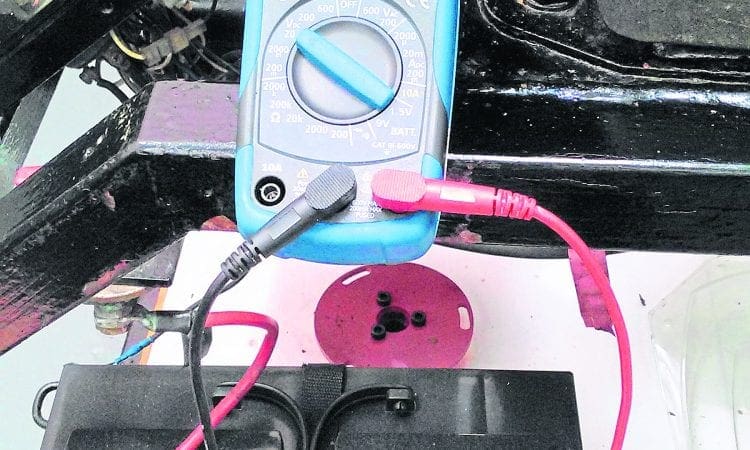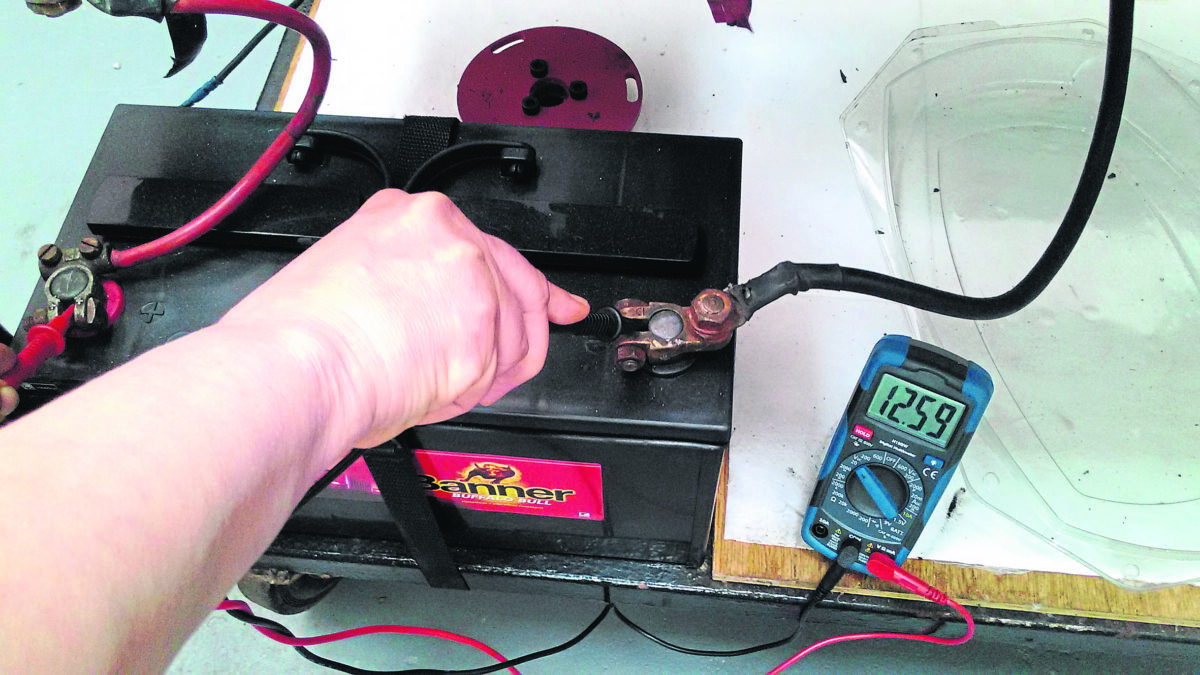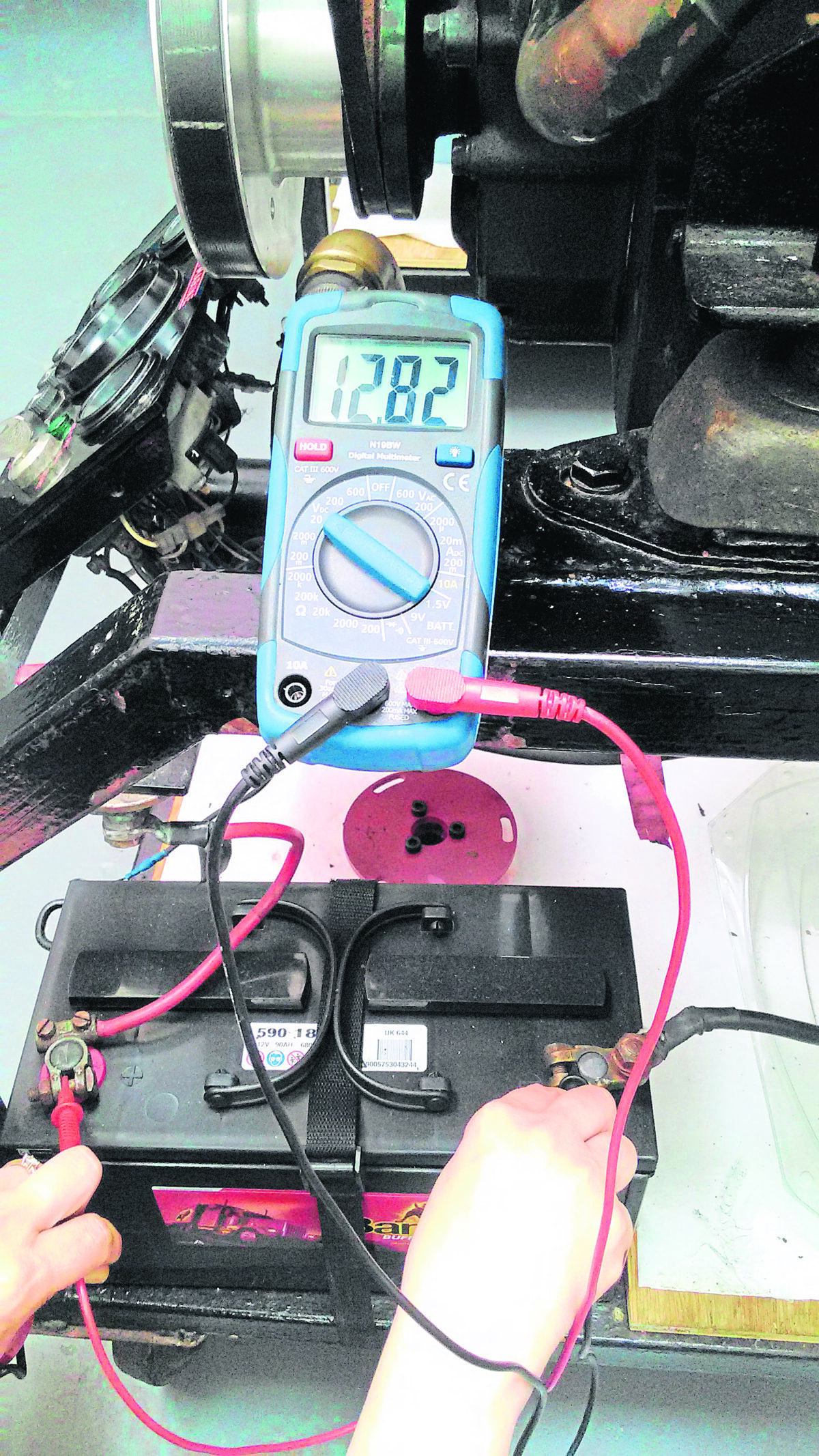How To Test A Marine Battery

TESTING battery voltage is not something the everyday boat possessor would undertake, yet, being able to test your own batteries gives yous an insight into many things.
The readings gained from checking your bombardment voltage, for example, can tell yous whether the gauges on your ignition panel are correct or how long y'all need to charge your batteries until they are fully charged.

In gild to check your battery voltage you will demand to sympathize how to utilise a multi-meter/battery tester. First, attach the exam wires to the multi-meter; the black test wire attaches to the plug marked COM, the red examination wire to the plug not marked with an A (information technology will exist marked just past symbols which include something similar to Ω).
All testers have the ability to read volts and some will do it automatically. If the automatic function is non present, yous will need to select the one marked V followed by ii lines (the lesser line will be broken). This stands for voltage (direct current), and then choose the sub setting 20 for 12v. The number reflects the maximum volt reading and then for 24v choose the sub setting 200.
Once selected, you are ready to test the battery voltage.

Before testing batteries, remove whatever covers and leave the batteries to stand for an 60 minutes. Once you are ready to examination them, isolate by turning off
the isolator switches. And then
place the ruby probe on the + (positive) last on the bombardment and the black probe on the – (negative) last. The multi-meter should now show a reading.
To test domestic batteries, you can exercise it two dissimilar means. To gain a bombardment bank reading, either place the red probe on any one of the bombardment + (positive) terminals and the black probe on any one of the – (negative) terminals or disconnect each battery individually and follow the first
test procedure.
The battery bank reading is great for gauging bombardment capacity and charging requirements. As a guide 11.8v or below is completely flat, 12.2v is fifty% capacity and 12.6v-12.8v is fully charged. Individual tests are equally bully for identifying faulty batteries as 1 may bear witness a significantly lower or higher reading to the others.
This indicates the battery is ready for replacement.
● Do you have a burning question on boat maintenance which breakup and assistance firm River Canal Rescue can aid you with? ● Do yous have a burning question on boat maintenance which breakdown and aid business firm River Canal Rescue tin can help you with? If you are keen to see a particular technical topic covered, contact us at Technical Tips, Towpath Talk, PO Box 43, Horncastle, Lincs LN9 6LZ; email [e-mail protected]
● River Canal Rescue runs boat and engine maintenance courses throughout the yr. ● River Canal Rescue runs boat and engine maintenance courses throughout the yr. To find out more visit www.rivercanalrescue.co.uk electronic mail [email protected] or phone call 01785 785680.
- About
- Latest Posts
![]()
Source: https://www.towpathtalk.co.uk/how-to-test-your-batteries-and-use-a-multi-meter-2/

0 Response to "How To Test A Marine Battery"
Post a Comment